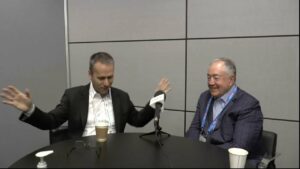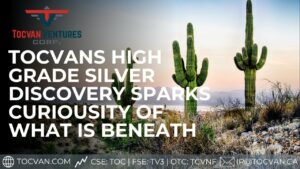2011 was a banner year for Goldgroup. The company completed its earn-in interest for 100% ownership of its flagship project, Caballo Blanco, situated near Veracruz, Mexico and completed a $40.25 million financing at $1.40 per share to fund development expenses (Stock Profile – TSE:GGA).
Early in February 2012, it was reported in a Mexican newspaper that the Governor of the State of Veracruz stated Goldgroup’s Caballo Blanco project should be designed with the welfare of all stakeholders in mind. At the time of the article Goldgroup’s shares were trading at $1.30.
Notwithstanding the Governor’s public statement, mining operating permits, including Goldgroup’s outstanding Environmental Impact Assessment, are a matter under the jurisdiction of the Federal government of Mexico.
Fast forward to September, 2012. Goldgroup announced the decision to defer the evaluation of the Environmental Impact Assessment for Caballo Blanco. A reasonable decision considering Mexico was going through a post-election change in Federal government.
Recently, there have also been management changes at the executive level which created additional uncertainty. And, as many mining investors know, 2012 was not the kind of year when uncertainty went unnoticed. Today, Goldgroup’s shares can be had for $0.35.
We connected with Goldgroup’s newly appointed President & CEO, Dr. Hans von Michaelis, to get the details on what’s in store for 2013.
Goldgroup is focused in Mexico and the country is a major destination for international mining investment, in short, why Mexico?
Mexico likes and wants mining development and welcomes foreign investment. Mexico is one of the most favorable mining jurisdictions in the world and that is why Goldgroup is focused there. The country has a deep-rooted history in mining, especially precious metals. Geologically, Mexico is well-endowed with numerous world-class deposits. The country has transparent and fair, Federal mining laws which are supportive of investment by foreign and domestic mining companies. For Goldgroup, Mexico has been an excellent opportunity for the development of gold mines.
There’s been quite a bit of turnover at the executive level of Goldgroup Mining over the past few months what precipitated the changes at the company?
Goldgroup has experienced some challenges over the past year, as is typical with companies fast tracking larger-scale mines to production. As a result, the Board tweaked its management team to better meet these challenges.
On October 12, 2012, the Board elected the companys then Executive Chairman, Gregg Sedun as interim, temporary President and CEO, to fill the place of Keith Piggott. I have been an active member of the Goldgroup team since the companys inception and was serving as Lead Director. Chester Millar has started and developed several gold mines in Mexico, and elsewhere. I previously worked with Chester on several of these developments and he wanted my help again to advance Goldgroups excellent projects and to regain focus on the companys main goals.
You were recently appointed as Goldgroups new President & CEO, in a nutshell, why did you take on the role and what is your plan for Goldgroup?
I gladly accepted the role as CEO and President as it represents a worthwhile and realistic challenge to build a successful gold mining company. Along with most mine development resource companies, the need arose to strategize to improve staying power through tough macroeconomic times, including downsizing overhead expenses.
On September 14th the Company announced it decided to defer the evaluation of the Environmental Impact Assessment at Caballo Blanco your flagship project. Tell us about the project and the status of the filing?
Goldgroups 100% owned flagship Caballo Blanco project consists of a series of oxidized gold mineralized zones located in the State of Veracruz in eastern Mexico. Within the 54,732 hectares of mineral concessions, the La Paila gold deposit has been delineated within an area with prolific epithermal alternation known as the Northern Zone. This zone is within a large volcanic system that hosts several additional prospective silicious targets that warrant further exploration in the future. The gold is fine-grained and occurs within vuggy, massive and brecciated silica in an altered andesite host-rock in a very large epithermal volcanic system.
Goldgroup completed a Preliminary Economic Assessment (PEA) on Caballo Blanco in April 2012. The PEA outlined robust project economics with a 1.5 year payback period, pre-tax internal rate of return (IRR) of 66.4% and a pre-tax net present value (NPV) using a 5% discount rate of $283.8 million. At a projected mining rate of 20,000 tonnes per day, the project is estimated to produce an average of 95,000 ounces of gold annually over a 7.5 year mine-life (with first year production estimated at 61,000 ounces of gold).
With regards to the status of the Environmental Impact Assessment (EIA), on September 14, 2012, Goldgroup announced that the company would defer submittal of the EIA as Mexico was undergoing Federal changes at that time. Goldgroup recognizes the importance of working with President Nietos new team to integrate their specific requirements.
It is important to note that the environmental permitting process is governed by Mexican Federal law and regulations. We are currently working with Federal, State and local authorities to ensure the company addresses all of their advanced comments and suggestions and we expect to reactivate the EIA submittal in a timely manner. After receiving the permits, the Caballo Blanco project is estimated to require approximately twelve months for detailed engineering and construction of an operating mine.
Your Cerro Colorado mine in Sonora, Mexico is currently in production. Please tell our readers about the mine and its strategic importance?
Cerro Colorado is where the Goldgroup team started mining and heap leaching in Mexico. It is a low-grade resource in a prospective district. The mine is nearing the end of its mine-life unless more ore can be proven up. The Cerro Colorado gold mine demonstrates Goldgroup’s mine development and operating capabilities. Once Caballo Blanco is permitted Goldgroups current plan is to draw on its seasoned and proven mine operating and heap leaching team at the Cerro Colorado mine.
Mining is a key part of Mexicos economy, what changes have you seen over the past 10 years that lead you to believe Mexico will remain a stable mining jurisdiction?
Mexico is one the fastest growing economies in Latin America. Mexicos young population is also growing and the country needs jobs, especially in the more rural areas. Mexicos cities have been growing very rapidly due to an influx from rural areas as well as population growth. The mining industry in an important source of rural jobs, especially in areas where the Government has clamped down on subsistence farming of illegal crops.
Since Mexico legalized foreign investment and foreign ownership of mines about twenty-five years ago, the industry has grown dramatically. Mexico recognizes that it needs and wants its mining industry to grow. Mexico is now becoming much more concerned about sustainability issues at its mining camps. There is no question that mining is recognized as an important income earner and wealth creator in Mexico.
























